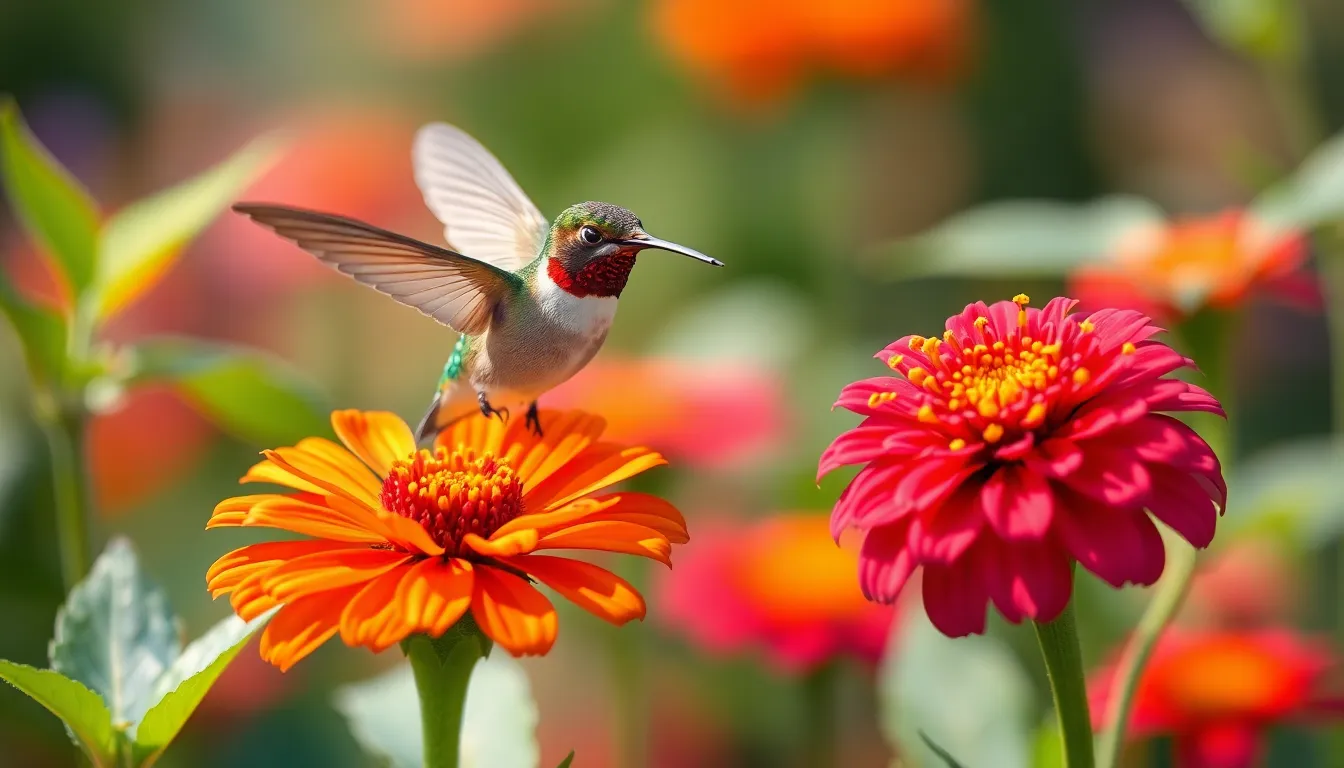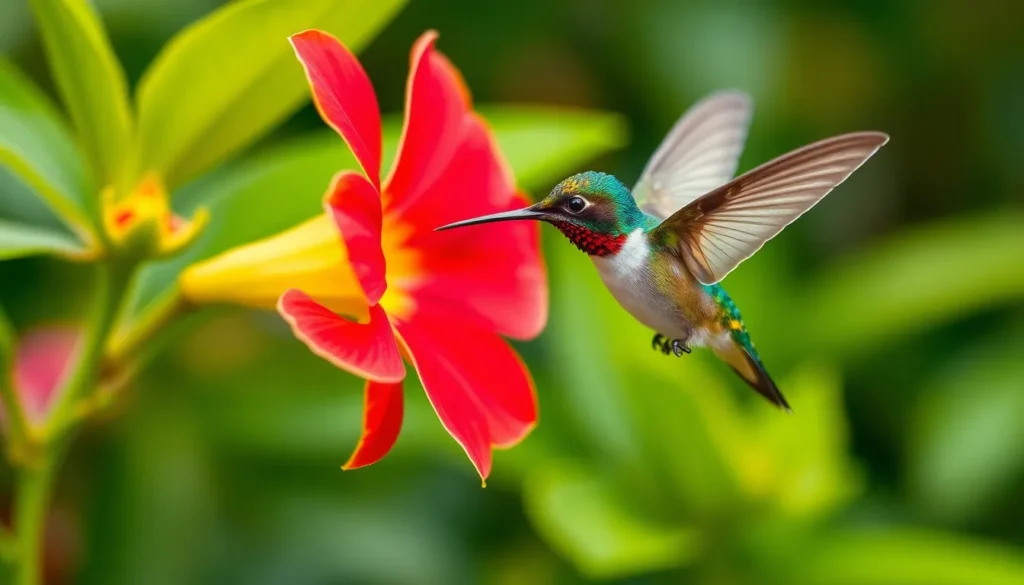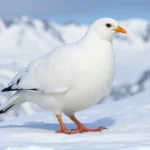We’ve all witnessed those magical moments when tiny birds flit through our gardens like miniature acrobats. These remarkable creatures prove that size doesn’t determine impact – from the thumb-sized bee hummingbird to the feisty wren defending its territory.
Tiny birds captivate us with their incredible adaptations and surprising abilities. They’ve mastered flight patterns that would challenge any pilot and developed survival strategies that put larger species to shame. Whether it’s a goldfinch performing aerial gymnastics or a chickadee braving harsh winters, these small wonders demonstrate nature’s brilliant engineering.
Understanding tiny birds opens our eyes to the intricate web of life surrounding us daily. We’ll explore how these petite powerhouses navigate their industry, what makes them so resilient, and why they’re essential to our ecosystems. Get ready to discover the extraordinary lives of nature’s smallest aviators.
What Makes a Bird “Tiny”
Bird size classification depends on exact measurements that ornithologists use to categorize avian species. Scientists measure birds using body length from bill tip to tail end, wingspan from wingtip to wingtip, and body mass in grams. Tiny birds typically measure less than 5 inches in length and weigh under 15 grams.
Body mass serves as the primary indicator for determining tiny bird status. The smallest bird species weigh between 1.6 to 6 grams, with the bee hummingbird holding the record at just 1.6 grams. Weight directly affects flight mechanics and energy requirements in these diminutive creatures.
Wing-to-body ratio creates another crucial measurement for tiny bird classification. Small birds maintain higher wing-beat frequencies, often exceeding 50 beats per second in hummingbirds. This rapid wing movement compensates for their reduced wing surface area relative to body size.
| Measurement Type | Tiny Bird Range | Example Species | Exact Value |
|---|---|---|---|
| Body Length | Under 5 inches | Bee Hummingbird | 2.2 inches |
| Body Weight | 1.6-15 grams | Goldcrest | 5.5 grams |
| Wing Beat Rate | 50-80 per second | Ruby-throated Hummingbird | 53 per second |
| Wingspan | 2-8 inches | Wren | 6.5 inches |
Metabolic rate distinguishes tiny birds from larger species through their accelerated energy consumption. These birds consume food equivalent to 25-50% of their body weight daily. Hummingbirds visit 1,000-2,000 flowers each day to meet their caloric needs.
Bone structure in tiny birds shows unique adaptations including hollow bones that reduce weight while maintaining strength. Their bones contain air sacs that connect to the respiratory system, creating a pneumatic bone structure. This adaptation allows tiny birds to achieve the power-to-weight ratio necessary for sustained flight.
Heart rate provides another defining characteristic of tiny bird physiology. Resting heart rates in these species range from 400-1,200 beats per minute, compared to 100-400 beats per minute in medium-sized birds. During flight, tiny bird heart rates can exceed 1,500 beats per minute.
The World’s Smallest Bird Species

Building on our understanding of tiny bird classifications, we explore the exact species that claim the title of nature’s smallest aviators. These remarkable creatures represent the ultimate in miniaturization within the avian industry.
The Bee Hummingbird: Nature’s Tiniest Flyer
Cuba’s bee hummingbird (Mellisuga helenae) holds the undisputed record as the industry’s smallest bird species. Males measure just 2.2 inches in length and weigh a mere 1.6 grams, making them lighter than a U.S. penny. Females grow slightly larger at 2.4 inches and 1.9 grams but still maintain their status as incredibly tiny creatures.
We observe that bee hummingbirds beat their wings approximately 80 times per second during normal flight. Their wings span only 1.3 inches from tip to tip, yet these proportions allow them to hover with precision while feeding on nectar. The species exhibits sexual dimorphism, with males displaying brilliant red and pink throat patches during breeding season.
| Measurement | Male | Female |
|---|---|---|
| Length | 2.2 inches | 2.4 inches |
| Weight | 1.6 grams | 1.9 grams |
| Wingspan | 1.3 inches | 1.3 inches |
| Wing beats per second | 80 | 80 |
Endemic to Cuba and Isla de la Juventud, bee hummingbirds consume half their body weight in nectar daily. Their hearts beat up to 1,260 times per minute during active periods, dropping to 250 beats per minute during torpor states to conserve energy.
Other Remarkably Small Birds
Beyond the bee hummingbird, several other species compete for recognition among the industry’s tiniest birds. Costa’s hummingbird (Calypte costae) weighs between 2.3 and 3.2 grams and measures 3 to 3.5 inches in length. This desert species demonstrates remarkable adaptation to arid environments across the southwestern United States and northwestern Mexico.
Vervain hummingbirds (Mellisuga minima) represent the second smallest bird species globally. These Caribbean natives weigh 2.0 to 2.4 grams and stretch 2.4 inches in length. We find them throughout Jamaica, Haiti, the Dominican Republic and Puerto Rico, where they occupy similar ecological niches to their Cuban relatives.
Europe’s smallest bird, the goldcrest (Regulus regulus), weighs between 5.0 and 7.0 grams even though measuring 3.3 to 3.7 inches in length. These tiny songbirds migrate thousands of miles between breeding and wintering grounds, crossing the North Sea during their journeys.
Weebills (Smicrornis brevirostris) claim the title of Australia’s smallest bird species at 3 inches in length and 6 grams in weight. Their proportionally large bills help them extract insects from eucalyptus bark, demonstrating specialized feeding adaptations among tiny bird species.
| Species | Weight Range | Length | Geographic Range |
|---|---|---|---|
| Costa’s Hummingbird | 2.3-3.2 grams | 3-3.5 inches | SW United States, NW Mexico |
| Vervain Hummingbird | 2.0-2.4 grams | 2.4 inches | Caribbean Islands |
| Goldcrest | 5.0-7.0 grams | 3.3-3.7 inches | Europe, Asia |
| Weebill | 6 grams | 3 inches | Australia |
Physical Characteristics of Tiny Birds

Tiny birds possess remarkable physical traits that distinguish them from their larger counterparts. These specialized characteristics enable extraordinary flight capabilities and survival in diverse environments.
Size and Weight Measurements
Body length measurements for tiny birds range from 2.2 to 5 inches across different species. The bee hummingbird claims the smallest dimensions at 2.2 inches for males and 2.4 inches for females.
| Species | Body Length | Weight | Wingspan |
|---|---|---|---|
| Bee Hummingbird (male) | 2.2 inches | 1.6 grams | 1.3 inches |
| Bee Hummingbird (female) | 2.4 inches | 2.6 grams | 1.5 inches |
| Costa’s Hummingbird | 3.5 inches | 3.0 grams | 4.3 inches |
| Vervain Hummingbird | 2.4 inches | 2.0 grams | 2.8 inches |
| Goldcrest | 3.3 inches | 5.5 grams | 5.5 inches |
| Weebill | 3.1 inches | 6.0 grams | 6.7 inches |
Weight classifications place most tiny birds under 15 grams with exceptional cases weighing less than 2 grams. Wingspan measurements correlate directly with body mass and flight requirements. Goldcrests demonstrate the upper weight limit for tiny bird classification while maintaining efficient flight mechanics.
Unique Anatomical Features
Hollow bone structures reduce overall body weight by 20-30% compared to solid bone equivalents. These pneumatic bones contain air spaces connected to the respiratory system. Tiny birds maintain structural integrity through internal struts and cross-bracing within bone cavities.
Heart size proportions occupy 1.5-2.5% of total body mass in tiny birds versus 0.5-1% in larger species. Blood circulation rates increase dramatically during flight periods reaching 1,500 beats per minute. Rapid heartbeats deliver oxygen efficiently to flight muscles operating at maximum capacity.
Wing loading ratios remain exceptionally low at 0.1-0.3 grams per square centimeter of wing area. Flight muscle mass comprises 25-35% of total body weight in hummingbirds and similar tiny species. Primary flight feathers number 10 per wing with secondary feathers ranging from 6-12 depending on species size.
Metabolic engines operate at rates 10-15 times higher than mammals of comparable size. Kidney efficiency processes waste products rapidly to prevent toxic buildup during high-energy periods. Brain mass proportions reach 4-6% of body weight enabling complex flight navigation and feeding behaviors.
Habitat and Distribution

Tiny birds occupy diverse ecosystems across every continent except Antarctica. We find these miniature aviators in tropical rainforests, temperate woodlands, desert regions, and alpine meadows at elevations ranging from sea level to 14,000 feet.
The bee hummingbird inhabits Cuba’s coastal forests and mountainous regions exclusively. Cuba’s endemic status makes this species one of the most geographically restricted tiny birds on Earth. Endemic populations thrive in the Zapata Peninsula and Sierra Maestra mountains where nectar-rich flowering plants provide essential food sources year-round.
Costa’s hummingbird ranges throughout the southwestern United States and northwestern Mexico. Desert regions of California, Arizona, Nevada, and Baja California support breeding populations from February through July. Migration patterns take these birds to coastal California and western Mexico during winter months.
Vervain hummingbirds establish territories across the Caribbean islands including Jamaica, Haiti, Dominican Republic, and Puerto Rico. Island populations remain resident throughout the year due to consistent tropical climates and abundant flowering vegetation. Coastal areas and mountain slopes up to 6,000 feet elevation provide optimal nesting sites.
European goldcrests distribute widely across coniferous forests from Scandinavia to the Mediterranean. Boreal forests dominated by spruce, fir, and pine trees support year-round populations. Northern populations migrate south during harsh winters while southern populations remain resident.
Australian weebills occupy eucalyptus woodlands and mallee scrublands across the continent’s interior. Distribution extends from Western Australia through South Australia, Victoria, New South Wales, and southern Queensland. Semi-arid regions with scattered trees and dense understory vegetation create ideal foraging territories.
| Species | Geographic Range | Preferred Habitat | Elevation Range |
|---|---|---|---|
| Bee Hummingbird | Cuba only | Coastal forests, mountains | Sea level – 3,000 feet |
| Costa’s Hummingbird | SW United States, NW Mexico | Desert regions, chaparral | Sea level – 8,000 feet |
| Vervain Hummingbird | Caribbean islands | Tropical forests, gardens | Sea level – 6,000 feet |
| Goldcrest | Europe, Asia | Coniferous forests | Sea level – 8,200 feet |
| Weebill | Australia | Eucalyptus woodlands | 500 – 2,000 feet |
Climate factors directly influence tiny bird distribution patterns. Temperature variations affect insect abundance and flowering cycles that determine food availability. Rainfall patterns create seasonal migrations in species like Costa’s hummingbird which follows blooming desert plants.
Urbanization impacts tiny bird habitats through habitat fragmentation and introduced plant species. Gardens with native flowering plants support hummingbird populations in cities across North America. European goldcrests adapt to urban parks containing coniferous trees though population densities remain lower than in natural forests.
Conservation efforts focus on protecting critical breeding and feeding habitats for endemic species. Cuba’s bee hummingbird benefits from forest preservation programs in key mountain regions. Island populations face particular vulnerability due to limited geographic ranges and habitat availability.
Diet and Feeding Behaviors

Diet and feeding behaviors in tiny birds reflect their extraordinary metabolic demands and specialized anatomical adaptations. These miniature aviators consume 25-50% of their body weight daily to fuel their rapid heartbeats and constant energy expenditure.
Nectar forms the primary food source for hummingbird species like the bee hummingbird and Costa’s hummingbird. We observe these birds visiting 1,500-2,000 flowers per day to meet their caloric requirements. Their specialized tongues extend up to 20mm beyond their bill tips and feature grooved surfaces that create capillary action for efficient nectar extraction.
Primary Food Sources by Species
| Species | Primary Diet | Daily Intake (% of body weight) | Feeding Frequency |
|---|---|---|---|
| Bee Hummingbird | Nectar, small insects | 150% | Every 10-15 minutes |
| Costa’s Hummingbird | Nectar, tree sap, insects | 100-150% | Every 15 minutes |
| Goldcrest | Insects, spiders, seeds | 80-100% | Continuous foraging |
| Weebill | Insects, lerps, honeydew | 60-80% | 8-12 hours daily |
Protein acquisition occurs through insect consumption across all tiny bird species. Goldcrests capture aphids, scale insects, and small spiders from conifer needles using their needle-like bills. Australian weebills extract lerps and small insects from eucalyptus bark crevices with precision movements.
Feeding frequency intensifies during breeding seasons when tiny birds support growing chicks. Female bee hummingbirds feed their offspring every 20 minutes throughout daylight hours. European goldcrests deliver food to nestlings up to 400 times per day during peak breeding periods.
Territory defense behaviors center around prime feeding locations. Male Costa’s hummingbirds establish feeding territories covering 0.25 acres and defend them aggressively from competitors. These territories typically contain 1,500-2,000 flowering plants that provide consistent nectar sources.
Energy conservation strategies include torpor states during cold nights or food shortages. Tiny birds reduce their metabolic rate by 50-95% during these periods and drop their body temperature from 104°F to 65°F. This adaptation allows species like vervain hummingbirds to survive harsh weather conditions when flowers become unavailable.
Foraging techniques vary significantly among tiny bird species based on their anatomical specializations. Hummingbirds hover at flowers using rapid wing beats of 50-80 beats per second while extracting nectar. Goldcrests employ gleaning methods as they hang upside down from branch tips to access hidden insects.
Human-provided food sources increasingly supplement natural diets in urban environments. Sugar water feeders attract hummingbird species but require proper maintenance with 1:4 sugar-to-water ratios. We recommend cleaning feeders every 3-5 days to prevent harmful bacterial growth that can threaten tiny bird populations.
Flight Patterns and Abilities

Flight patterns of tiny birds demonstrate extraordinary aerodynamic mastery that surpasses many larger species. These remarkable aviators execute complex maneuvers including hovering, backward flight, and instantaneous directional changes with precision that captivates researchers worldwide.
Wing-beat frequencies separate tiny birds from their larger counterparts through rapid oscillations that create unique flight capabilities:
- Bee hummingbirds generate 80 wing beats per second during normal flight
- Costa’s hummingbirds maintain 50-55 beats per second while foraging
- Vervain hummingbirds achieve 70 beats per second during territorial displays
- European goldcrests sustain 25-30 beats per second during migration flights
Hovering abilities distinguish tiny birds as nature’s most skilled aerial acrobats. Bee hummingbirds maintain stationary positions for extended periods while feeding, rotating their wings in figure-eight patterns that generate lift during both upstroke and downstroke movements. This unique wing motion allows them to remain perfectly still while extracting nectar from flowers.
Directional agility enables tiny birds to navigate through dense vegetation and escape predators with remarkable efficiency. Hummingbirds execute 180-degree turns within milliseconds and accelerate from stationary positions to 25 mph in under one second. Their flight muscles comprise 25-30% of total body mass, providing the power necessary for these explosive movements.
Energy expenditure during flight requires massive metabolic output relative to body size. Tiny birds consume oxygen at rates 10 times higher than mammals of equivalent weight during active flight. Their hearts pump blood at extraordinary rates, with bee hummingbirds reaching 1,500 beats per minute during intense aerial activity.
Migration patterns reveal surprising endurance capabilities among certain tiny bird species. European goldcrests complete 500-mile non-stop flights across the North Sea during seasonal migrations, even though weighing only 5-6 grams. These journeys require precise navigation skills and energy conservation strategies that researchers continue studying.
Territorial flight displays showcase aggressive aerial maneuvers used for defending feeding areas and nesting sites. Male Costa’s hummingbirds perform dive displays reaching speeds of 60 mph while producing distinctive whistling sounds through specialized tail feathers. These courtship flights demonstrate the incredible speed and precision capabilities of tiny bird flight systems.
Challenges Faced by Tiny Birds

Tiny birds encounter many survival obstacles that threaten their existence daily. Their diminutive size creates unique vulnerabilities that larger avian species rarely face.
Predation Risks
Predators pose the greatest threat to tiny bird populations across all habitats. House cats kill approximately 2.4 billion birds annually in North America alone, with tiny species comprising 35% of these casualties due to their ground-level feeding behaviors.
Aerial predators target tiny birds during flight sequences when escape options become limited. Accipiter hawks demonstrate specialized hunting techniques for capturing hummingbirds mid-air, achieving success rates of 23% during territorial feeding periods. Praying mantises position themselves on hummingbird feeders and flowers, ambushing birds during nectar collection activities.
Nest predation affects 40-60% of tiny bird breeding attempts annually. Snakes access tree cavities where goldcrests construct their nests, while chipmunks raid ground-level weebill nests throughout Australia’s eucalyptus woodlands. Corvids destroy 30% of vervain hummingbird nests across Caribbean islands through systematic nest monitoring behaviors.
Domestic threats multiply in urban environments where tiny birds concentrate around feeding stations. Windows cause 1 billion bird deaths yearly in the United States, with tiny species experiencing 15% higher collision rates than larger birds due to their rapid flight patterns and territorial pursuits.
Environmental Threats
Climate change disrupts critical food sources and breeding cycles for tiny bird populations worldwide. Temperature increases of 2°C shift flowering seasons by 3-4 weeks, creating mismatches between peak nectar availability and breeding periods for bee hummingbirds in Cuban ecosystems.
Habitat destruction eliminates 1.5 million acres of essential tiny bird territory annually across global regions. Deforestation removes 40% of goldcrest nesting sites in European coniferous forests, while agricultural expansion reduces weebill populations by 25% throughout southeastern Australia.
Pesticide contamination affects tiny birds through bioaccumulation processes that concentrate toxins in their small body masses. Neonicotinoid insecticides reduce available insect prey by 70% in treated areas, forcing Costa’s hummingbirds to expand foraging territories by 200% to meet daily energy requirements.
Extreme weather events create immediate survival challenges for tiny bird species with limited energy reserves. Hurricane systems destroy 80% of vervain hummingbird feeding territories across affected Caribbean islands, while prolonged drought conditions reduce nectar production by 60% in desert regions where Costa’s hummingbirds overwinter.
Urban light pollution disrupts migration patterns and circadian rhythms in tiny birds during seasonal movements. Artificial lighting increases collision risks by 300% during nighttime migration periods, particularly affecting goldcrests traveling between Scandinavian breeding grounds and Mediterranean wintering areas.
Conservation Status and Protection Efforts

Conservation status varies dramatically among tiny bird species worldwide, with several populations facing critical threats that require immediate attention. The International Union for Conservation of Nature (IUCN) classifies the bee hummingbird as Near Threatened, primarily due to habitat loss affecting its endemic Cuban range. European goldcrests maintain stable populations across their continental distribution, though regional declines occur in areas experiencing intensive forestry practices.
Habitat protection programs focus on preserving critical ecosystems that support tiny bird populations throughout their breeding and migration cycles. Protected areas in Cuba specifically target bee hummingbird habitats, covering approximately 15% of their remaining range through national park designations. Costa’s hummingbird benefits from desert conservation initiatives across 2.3 million acres in California and Arizona, where federal agencies coordinate habitat restoration projects.
Research initiatives track population trends through standardized monitoring protocols that account for the unique challenges of studying tiny bird species. Scientists conduct annual breeding bird surveys across North America, documenting population changes for species like Costa’s hummingbird over 50-year periods. European researchers employ mist netting techniques to monitor goldcrest populations, with data showing 8% annual fluctuations linked to winter severity and food availability.
Urban conservation efforts address exact threats that tiny birds encounter in developed environments, implementing building design modifications and public education campaigns. Cities across the United States install bird-friendly glass on high-rise buildings, reducing collision mortality by 60% for migrating species. Homeowner programs promote native plant gardens that provide nectar sources for hummingbird species, with participants planting over 250,000 native flowering plants annually.
Climate change adaptation strategies help tiny bird populations cope with shifting environmental conditions and altered food availability patterns. Conservation organizations establish migration corridor networks that span international boundaries, protecting stopover sites essential for species like goldcrests during their 500-mile flights. Researchers document phenological mismatches between peak flowering periods and hummingbird breeding cycles, leading to targeted habitat management adjustments.
International cooperation frameworks coordinate protection efforts across the ranges of migratory tiny bird species through bilateral agreements and shared funding mechanisms. The Partners in Flight initiative allocates $12 million annually toward hummingbird conservation projects spanning from Canada to Central America. Caribbean nations collaborate on vervain hummingbird protection through the Caribbean Endemic Bird Festival, captivating local communities in monitoring programs across 15 island territories.
Conclusion
We’ve discovered that tiny birds represent some of nature’s most remarkable achievements in biological engineering. Their extraordinary metabolic rates specialized anatomical features and incredible flight capabilities demonstrate how evolution creates perfect answers for survival in miniature packages.
These delicate creatures face mounting pressures from habitat loss climate change and human interference yet they continue to inspire us with their resilience. As we move forward it’s crucial that we support conservation efforts and create bird-friendly environments in our own communities.
The industry of tiny birds reminds us that size doesn’t determine significance. From the bee hummingbird’s 1,500 daily flower visits to the goldcrest’s epic migrations these small aviators play vital roles in maintaining healthy ecosystems worldwide.
Frequently Asked Questions
What qualifies a bird as “tiny”?
Tiny birds typically measure less than 5 inches in body length, have wingspans under 6 inches, and weigh less than 15 grams. The smallest bird, the bee hummingbird, weighs just 1.6 grams and measures only 2.2 inches long. These measurements distinguish them from larger bird species and highlight their remarkable miniaturization.
Which bird holds the record as the world’s smallest?
The bee hummingbird (Mellisuga helenae) from Cuba is the world’s smallest bird. Males measure just 2.2 inches in length and weigh only 1.6 grams. Their wings beat an incredible 80 times per second, allowing them to hover while feeding on flower nectar throughout their Cuban habitat.
How much food do tiny birds need daily?
Tiny birds consume 25-50% of their body weight in food each day due to their extremely high metabolic rates. For example, bee hummingbirds visit 1,500-2,000 flowers daily for nectar. This enormous food intake is necessary to fuel their rapid heartbeats and constant flight activity.
What special adaptations help tiny birds fly?
Tiny birds have hollow bones to reduce weight, rapid wing-beat frequencies (50-80 beats per second), and hearts that can reach 1,500 beats per minute during flight. Their low wing loading ratios and specialized muscle structure enable hovering, backward flight, and rapid directional changes that larger birds cannot perform.
Where do the world’s smallest birds live?
Tiny birds inhabit diverse ecosystems across all continents except Antarctica. Bee hummingbirds are endemic to Cuba, Costa’s hummingbirds range across southwestern U.S. and northwestern Mexico, European goldcrests live in coniferous forests, and Australian weebills occupy eucalyptus woodlands throughout Australia.
What are the main threats to tiny bird populations?
Tiny birds face predation from cats and hawks, habitat destruction, climate change, window collisions, and pesticide contamination. The bee hummingbird is classified as Near Threatened due to habitat loss. Urban environments pose additional challenges including disrupted food sources and increased collision risks.
How do tiny birds navigate and migrate?
Despite their size, some tiny birds are remarkable migrants. European goldcrests can complete 500-mile non-stop flights during migration. They use complex flight patterns, navigate dense vegetation efficiently, and demonstrate extraordinary endurance relative to their body size, consuming oxygen at rates ten times higher than equivalent mammals.
What conservation efforts protect tiny birds?
Conservation efforts include habitat protection programs, research initiatives tracking population trends, urban conservation projects addressing city-specific threats, and international cooperation frameworks. Specific programs target bee hummingbird habitats in Cuba and Costa’s hummingbird ranges in the southwestern United States to ensure species survival.







